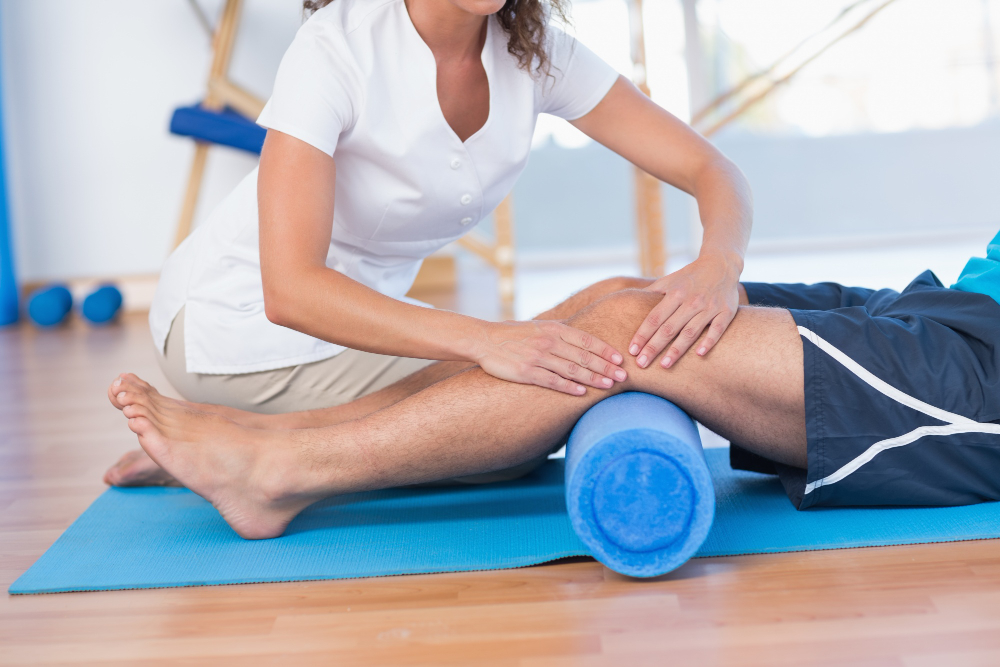Management Principles of Hamstring Injury Rehabilitation

Hamstring injuries are among the most common ailments faced by athletes and fitness enthusiasts alike. Whether you're sprinting, playing soccer, or even doing yoga, this critical muscle group is put through its paces daily. But what happens when one of these essential muscles gets injured? Proper rehabilitation is key to a full recovery, and understanding the principles behind it can make all the difference.
If you're struggling with a hamstring injury and searching for the best way to optimize your recovery, you're in the right place. This post will break down the management principles of hamstring injury rehabilitation, offering actionable insights and helpful tips. Plus, we'll explain why working with a physical therapist in Winter Park, FL could give you the support you need to get back on your feet.
Understanding Hamstring Injuries
What are the hamstring muscles?
The hamstrings are a group of three muscles located at the back of your thigh: the biceps femoris, semitendinosus, and semimembranosus. Together, they play a crucial role in bending your knee, extending your hip, and assisting with movements like running and jumping.
Types of hamstring injuries
Hamstring injuries typically fall into these main categories:
- Muscle strain: A mild overstretching of the muscle.
- Partial tear: A moderate injury where part of the muscle fibers are torn.
- Complete tear: A severe injury involving a full rupture of the muscle.
Common symptoms include sudden pain during activity, swelling, bruising, and difficulty using the affected leg for movement.
The Importance of Rehabilitation Principles
Rehabilitation is non-negotiable when managing a hamstring injury. Without it, you risk incomplete healing, scar tissue buildup, and recurring injuries. Scientific studies also show that improper or rushed recovery can lead to significant loss of function over time.
To avoid these outcomes, physical therapists create rehabilitation programs based on four key principles.
Key Principles of Hamstring Injury Rehabilitation
1. Rest and Protect the Muscle
The first stage of rehabilitation begins with rest. It’s important to stop using the injured muscle to prevent further damage. While total immobilization isn’t recommended, limited activity is necessary to allow the muscle fibers to start healing.
Practical tips:
- Use compression wraps or elastic bandages to reduce swelling.
- Apply ice packs for short intervals (15–20 minutes) multiple times daily to manage pain and inflammation.
- Avoid sudden or jerky movements that could exacerbate the damage.
A physical therapist in Winter Park, FL can help monitor your activity levels and ensure you’re not unintentionally hindering your recovery.
2. Gradual Reintroduction of Movement
Once the acute inflammation subsides, the next step is to introduce gentle movement. This stage focuses on improving blood flow to the injured area and regaining a full range of motion.
Types of exercises:
- Static and dynamic stretching: Stretching reduces stiffness and improves flexibility.
- Controlled mobility drills: Low-impact drills like cycling or light swimming enhance circulation without adding unnecessary strain.
A trained physical therapist will ensure these movements are executed safely to prevent re-injury.
3. Strengthening the Hamstring
Building strength in the injured hamstring muscle is critical, but it must be approached cautiously. Weak muscles are prone to further tears and other complications. Targeted exercises can help rebuild strength while improving tissue resilience.
Recommended exercises:
- Isometric hamstring bridges
- Nordic hamstring curls
- Resistance band extensions
- Eccentric strengthening exercises
Consistency is key here. A well-designed strength program, customized by a qualified physical therapist, can boost your recovery significantly.
4. Gradual Return to Activity
Rehabilitation doesn’t stop at the gym. The ultimate goal is to return to sports or regular activities without pain or limitation. A systematic reintroduction to high-impact activities like running or jumping is important.
Advanced rehabilitation focuses on:
- Improving neuromuscular control with plyometric exercises.
- Conducting sport-specific training tailored to your needs.
- Monitoring for signs of secondary injuries or setbacks.
This transition phase should be carefully planned and overseen by professionals to ensure a safe and effective return to your routine.
Why Work with a Physical Therapist?
Hamstring injury rehabilitation isn’t a one-size-fits-all approach. Every injury is unique, and factors like your age, fitness level, and injury severity play a role in your recovery.
That’s where a physical therapist in Winter Park, FL, like the team at B Physical Therapy, comes in. Here’s what they can offer:
- Tailored recovery plans based on your specific injury.
- Expert guidance to ensure exercises are performed correctly.
- Access to advanced rehabilitation tools to speed up recovery.
- Continuous monitoring to track your progress and prevent setbacks.
Additional Tips for Preventing Hamstring Injuries in the Future
- Warm-up before exercise
Dynamic stretches and light cardio before workouts can improve muscle flexibility and reduce the risk of strain.
- Focus on strengthening
Regularly performing hamstring-specific exercises can enhance both strength and endurance.
- Maintain flexibility
Stretching your hamstrings and surrounding muscles (like your glutes and calves) reduces tension and promotes overall muscle health.
- Listen to your body
Don’t ignore the warning signs of fatigue or strain. Rest when needed to avoid overworking your muscles.
Get Back on Track with B Physical Therapy
Recovering from a hamstring injury doesn’t have to be overwhelming. By following the right rehabilitation principles and seeking professional guidance, you can restore strength and avoid long-term issues.
If you’re looking for a trusted physical therapist in Winter Park, FL, reach out to B Physical Therapy today. Our team of experts can create a personalized plan to help you feel stronger, faster, and more confident than before.